All publications
Journal der Künste 23
Published three times a year (German/English), available free of charge
ISSN (Print EN) 2627-2490
not yet published
The first issue of Journal der Künste under the presidency of Manos Tsangaris and Anh-Linh Ngo focuses on artistic freedom. Texts by Lena Gorelik, Ralf Michaels, Carsten Wurm and others as well as a conversation with Kristóf Kelemen and Gergely Nagy from Hungary address the defence of artistic autonomy from various perspectives. Further contributions provide insights into the genesis of the current exhibitions and the work of the archive.

Im Schlangenhain. Nella Serpentara
Clara Herrmann and Anneka Metzger on behalf of the Akademie der Künste, Berlin 2024
German/italian, 336 pp.
monochrome, with colour section and insert
ISBN 978-3-88331-257-6
Best.-Nr. 1211
€ 22
The Serpentara’s 150th anniversary takes a fresh look at this inspirational location. In 1873, artists saved the oak grove in Olevano Romano, Italy, from being cut down. Today, Villa Serpentara is a residence for visiting fellows from the Akademie der Künste. In 15 contributions, Serpentara artists, eyewitnesses and art historians explore the myth, visual motif and stories surrounding the famous oak grove, offering new approaches to its history.
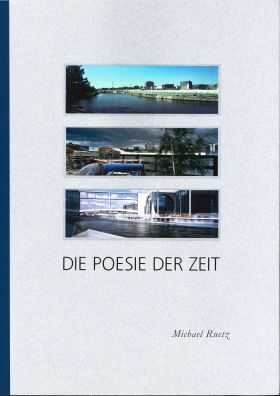
Michael Ruetz
Poesie der Zeit
éditions facteur cheval, Berlin 2024
German/English/French, 192 pp.,
365 ill.
ISBN 978-3-00-077996-1
Best.-Nr. 6050
out of print
How can time and transience be visualised? How can changes in a society or an urban space be documented? Since the mid-1960s, artist Michael Ruetz has been observing the transformation of natural and urban environments at places in Berlin, Germany and Europe in a photographic study. His works, called Timescapes, comprise more than 600 locations and thousands of photographs. The central concept of Timescapes is that the position and visual axis of the camera always remain the same, while only the time intervals of the photo series vary.

Michael Ruetz Timescapes Poetry of Time
Akademie der Künste, Berlin 2024
German/English, 45 ill.
5 photo booklets
ISBN 978-3-88331-258-3
Best.-Nr. 6049
€ 15
How can time and impermanence be rendered visible, and how can the upheavals and changes taking place in a society or an urban space be documented? Few other artists have concerned themselves with these questions to the extent that Michael Ruetz has. In the mid-1960s, he embarked on a large-scale photographic study to observe the transformation of natural and urban environments in Germany and Europe. Ruetz has recorded the metamorphoses in photographic series made up of images inventorying the changes and snapshots taken over decades. He calls them Timescapes.
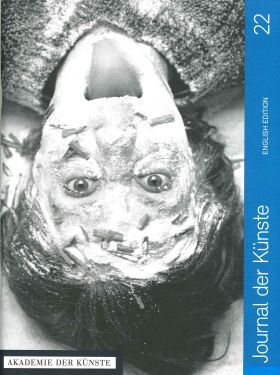
Journal der Künste 22
Published three times a year (German/English), available free of charge
ISSN (Print EN) 2627-2490
The Journal der Künste, issue 22, bids farewell to Jeanine Meerapfel and Kathrin Röggla, the Akademie’s former president and vice-president. It explores the possibility of utopias with Matěj Spurný, Eva von Redecker and Iris ter Schiphorst and the political shift to the right in Germany with Thomas Krüger, Christina Clemm and Holger Bergmann. The 2023 Kollwitz Prize recipient, Sandra Vásquez de la Horra, shows works from her oeuvre; and a Carte blanche designed by Wolfgang Tillmans is featured. The archive includes the stories behind a photomontage by István Szabó and newly acquired drawings by George Grosz, as well as insights into Jürgen Flimm’s director’s workshop.
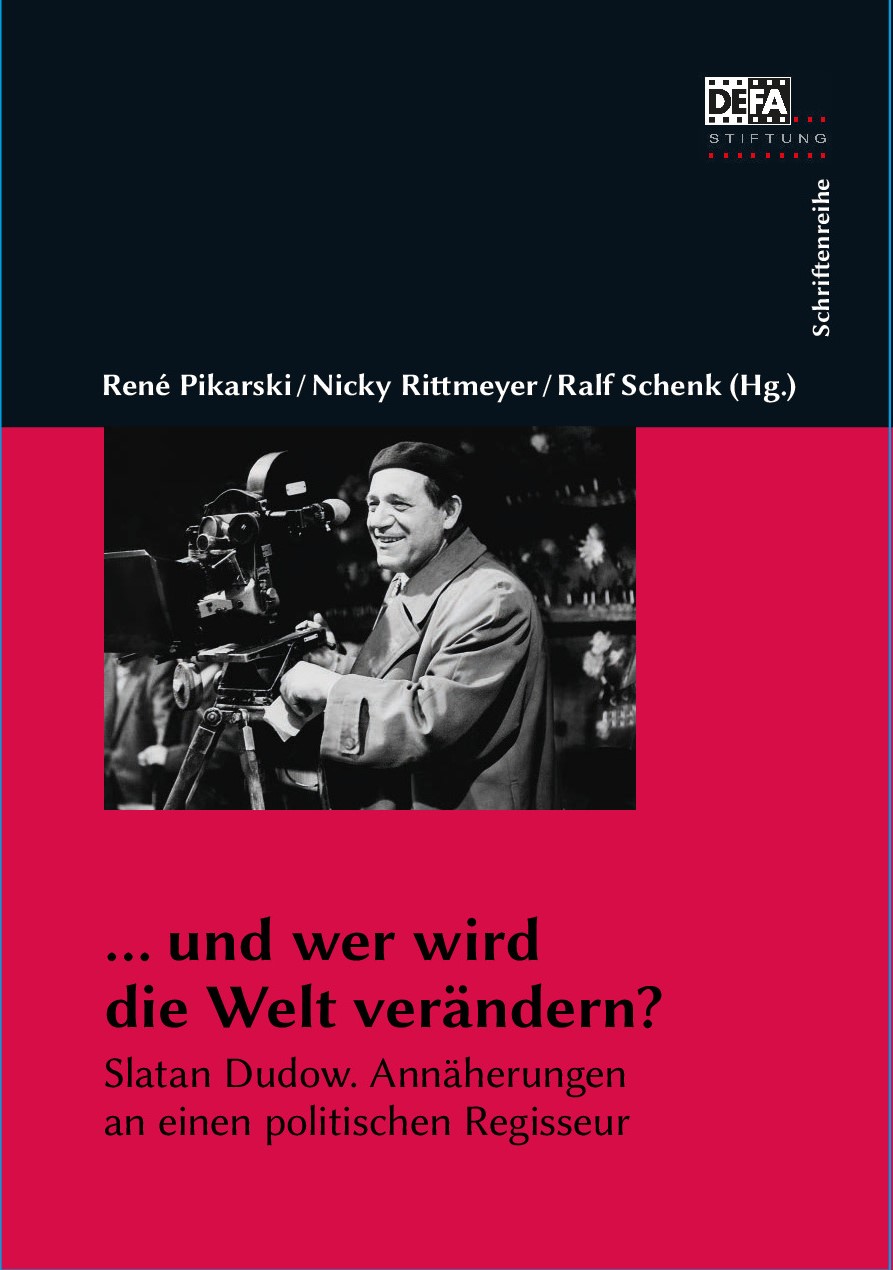
„…und wer wird die Welt verändern?“. Slatan Dudow. Annäherungen an einen politischen Regisseur
René Pikarski / Nicky Rittmeyer / Ralf Schenk im Auftrag der DEFA-Stiftung Berlin (in Kooperation mit der Akademie der Künste Berlin)
Bertz+Fischer, Berlin 2024
German, 688 pp.,
108 ill.
incl. 2 DVDs
ISBN 978-3-86505-425-8
Best.-Nr. 6051
€ 43
Slatan Dudow (1903–1963) is considered one of the pioneering left-wing representatives of Weimar Cinema and filmmaking in the GDR. Some of his works have entered the canon of German and international film history. Others shaped cinema’s orientation at the time. This comprehensive anthology compiles new research findings, reminiscences, and accounts from more than 30 authors. The extensive Slatan Dudow Archive at the Akademie der Künste was assessed for the first time for this publication.
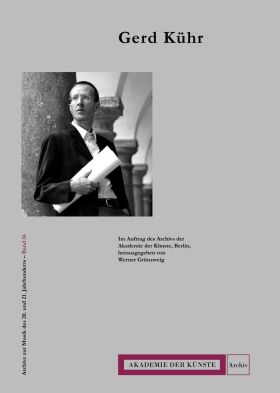
Archive zur Musik des 20. und 21. Jahrhunderts, Band 16 Gerd Kühr
Werner Grünzweig im Auftrag der Akademie der Künste, Berlin
von Bockel Verlag, Neumünster 2024
German, 176 pp.,
25 ill.
ISBN 978-3-95675-047-2
Best.-Nr. 3055
€ 29,80
Composer Gerd Kühr (b. 1952 in Carinthia, Austria) studied under Hans Werner Henze, among others. He experienced his breakthrough in 1988 with the opera Stallerhof, based on the play by Franz Xaver Kroetz. To this day, he has devoted himself primarily to music theatre. In addition to an extensive interview with Gerd Kühr and an inventory of the Gerd Kühr Archive at the Akademie der Künste, the publication contains important texts by the composer.
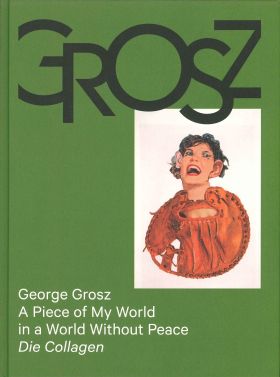
George Grosz: A Piece of My World in a World without Peace. Die Collagen
Birgit Möckel, Rosa von der Schulenburg
Verlag der Buchhandlung Walther und Franz König, Köln 2024
German, 172 pp.,
180 ill.
ISBN 978-3-7533-0531-8
Best.-Nr. 1215
€ 35
Collages made from photo materials taken from print media played a significant role in George Grosz’s works, especially during his early period in Berlin and his final years in the United States. Both female and male stereotypes and their counterparts recur, as do props from everyday life and the consumer world, aptly commenting on the society of their times. The catalogue includes all the works in the exhibition. The texts present the most recent findings on collage in Grosz’s oeuvre, drawing associations to comparable works by Erwin Blumenfeld, Herbert Fiedler and Hannah Höch.

Kolja Lessing
Ursula Mamlok
Composer between New York and Berlin
Hermann Simon
Hentrich & Hentrich, Berlin Leipzig 2024
German, 82 pp.,
19 ill.
ISBN 978-3-95565-636-2
Best.-Nr. 3054
€ 8,90
Even in her youth, Ursula Mamlok (1923–2016) had one single career goal: to become a composer – despite all the adversity of 1930s Berlin, which she left with her parents at the last minute in 1939. In New York, the struggle for her compositional identity began. After a successful career in the USA, the grande dame of contemporary music ventured a new beginning in Berlin in 2006 after her husband Dwight Mamlok passed away.